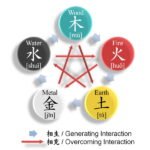SK Hynix’s multi-chip package
TOKYO – The planned initial public offering (IPO) of Japanese memory chipmaker Kioxia Holdings Corp. is expected to affect its bigger South Korean rivals – Samsung Electronics Co. and SK Hynix Inc. as global chipmakers are striving to gain the upper hand in renewed demand for memory chips amid an AI boom.
Kioxia, the world’s No. 3 NAND flash memory maker, on Friday applied to list its shares on the Tokyo Stock Exchange (TSE), possibly in October, in what is expected to be Tokyo’s biggest IPO this year.
The IPO is Kioxia’s second attempt after its bid to go public in 2020 went awry amid a chip industry downturn and an escalating US-China trade conflict.
The listing application comes after Kioxia and its US peer Western Digital Corp. decided to halt merger talks late last year due partly to opposition by SK Hynix, which indirectly owns a significant stake in Kioxia.
Encouraged by the NAND flash memory market rebound, the Japanese company is reviving its IPO bid to raise fresh funds for R&D and facility investments and catch up with Samsung and SK Hynix – the world’s No. 1 and No. 2 NAND players, respectively.
Kioxia’s Kitakami plant in northeastern Japan (Coutesy of Nikkei)
BOON FOR SK HYNIX, BANE FOR SAMSUNG?
Analysts said Kioxia’s IPO could negatively affect Samsung and SK Hynix.
With proceeds from its share sale, Kioxia plans to expand its NAND flash production capacity to meet growing demand for advanced storage device chips from AI clients.
Kioxia recently raised the operating rates of its plant in Yokkaichi, Mie Prefecture and another plant in Kitakami, Iwate Prefecture to 100%. The company is also investing in converting its production lines to produce 8th and 9th-generation advanced products from 6th-generation products earlier.
At the same time, the company is expected to invest in the enterprise solid-state drive (eSSD) segment, which is growing in demand in the AI era.
“With the investment, Kioxia’s product competitiveness and chip supply volume will increase. This is bad news for Samsung and SK,” said an industry official.
Kioxia posted an operating loss in the tunes of billions of dollars last year. However, it swung to a profit this year, posting record quarterly sales of 428.5 billion yen ($3 billion) in the April-June period, up 70.6% from a year earlier, driven by robust demand for chips used for data centers on the back of the recent AI boom.
SK HYNIX MAY SELL DOWN STAKE IN KIOXIA
The Japanese chipmaker was spun off from Toshiba Corp. in 2017, acquired by a consortium led by US private equity firm Bain Capital in 2018 and was renamed Kioxia.
SK Hynix, the semiconductor arm of SK Group, also invested about 4 trillion won ($3.37 billion) in the consortium, of which 1.3 trillion won was used to buy convertible bonds (CBs) to secure up to a 15% stake in Kioxia.
Samsung attends FMS 2024, the international annual meeting of flash memory chipmakers in Santa Clara
Currently, the Bain-led consortium holds a 56.2% stake in Kioxia. Toshiba owns a 40.6% stake and Hoya holds a 3.1% stake.
SK Hynix’s stake in Kioxia, via the Bain-led consortium, is 19%. If its CBs are converted into shares, SK’s total stake would rise to 34%.
Analysts said Kioxia’s IPO could also mean a boon for SK Hynix as Kioxia’s listing offers the Korean chipmaker an opportunity to exit from its investment.
According to media reports, Kioxia aims to raise at least $500 million through its IPO, achieving a market capitalization of over 1.5 trillion yen ($10.3 billion)
As of the first quarter, Samsung is the world’s largest NAND flash maker with 36.7% market share, followed by SK Hynix (22.2%) and Kioxia (12.4%).
By Jeong-Soo Hwang and Il-Gue Kim
hjs@hankyung.com
In-Soo Nam edited this article.













